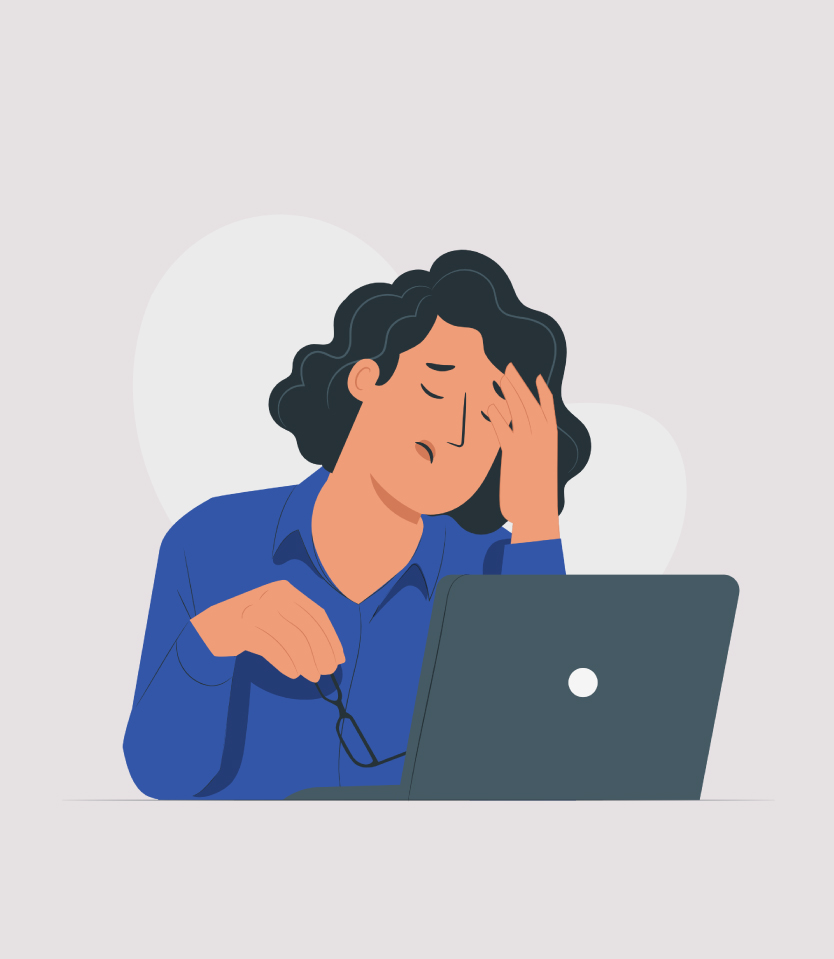
In today’s technological era, the use of smart devices, especially mobile phones, is on the rise. There are roughly 6.4 billion smartphone users on the planet (Statista, 2021). Given the world’s population of 7.9 billion people, this translates to a smartphone penetration rate of more than 80%. The number of smartphone users is also quickly increasing, as indicated by the fact that there were only 3.7 billion smartphone users just six years ago in 2016. In other words, in just half a decade, the number of smartphone users has surged by 73.9 per cent.
Now that we know how many individuals possess smartphones, the next step is to figure out how much time they spend using them. Every day, the average individual spends 6 hours and 57 minutes staring at a screen (for internet-connected activities). The majority of which (3 hours and 43 minutes) is spent on a smartphone. Different demographic groups have acclimated to differing levels of screen time due to constraints placed to prevent the spread of COVID-19 during the ongoing pandemic. Moreover, several empirical research studies across various population categories documented a dramatic increase in screen time. This increment in screen time may significantly affect a person’s physical and mental welfare.
Research suggests that obesity, hypertension, type 2 diabetes, myopia, depression, sleep difficulties, and other non-communicable illnesses are all linked to screen usage. Furthermore, the risks of non-communicable diseases linked to sedentary activities that increase screen time provide crucial insights into how screen time might coexist with other health behaviours and result in poor health outcomes across populations. Several evidence-based reviews have documented the harmful effects of excessive screen time on mental health. An analysis of 12 studies indicated that those who spend more time on screens have a greater risk of depression. In community-based studies, excessive use of technology in young children has been linked to cognitive, linguistic, and social/emotional deficits (Pagani, Fitzpatrick, Barnett, &Dubow, 2010). Even though screen time’s psychological health consequences may not depend on the amount of time spent in front of the screen, the quality and contents of screen use might have critical repercussions.
Additionally, the blue light emitted by electronics has been linked to eye health issues such as dry eye, macular degeneration, cataracts, blurry vision and eye strain. Light that may seem white may possess a significant blue component which can expose the eye to a greater number of wavelengths from the blue end of the spectrum. Since blue light reduces melatonin synthesis, it disrupts sleep patterns. Aside from disrupting sleep, several experts believe that blue-tinted light damages human vision. The most severe risk of blue light exposure is retinal damage; the amount of damage varies based on the wavelength of light, intensity, and time of exposure. Experts conclude roughly half of all computer users suffer from digital eye strain, often known as computer vision syndrome. Dry, irritated eyes and blurred vision are common symptoms of the same.
Besides this, excessive exposure to blue-light disrupts the circadian rhythms of our bodies. Circadian rhythms are 24-hour cycles that enable our bodies to determine when to perform essential processes. While all visible light has the potential to disrupt circadian rhythms, blue light has the most impact. Blue light exposure at night can fool our brain into believing it’s daytime, altering our circadian rhythms and making us feel awake rather than fatigued. Chronic circadian rhythm misalignment can have detrimental health consequences, including metabolic problems and mental health concerns, including depression.
